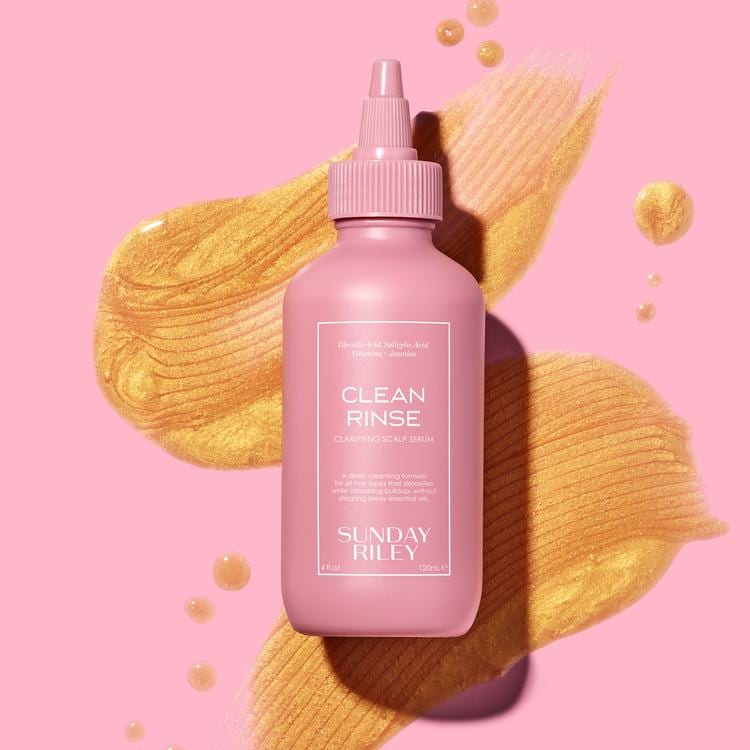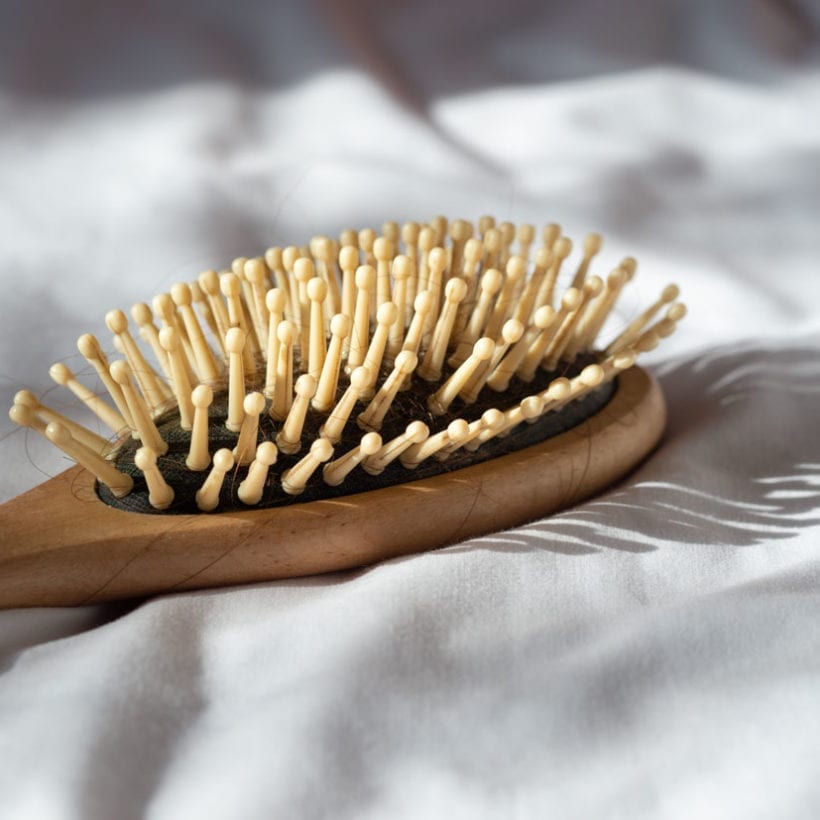I never was one of those girls with a thick, glorious mane of hair. I’m more the type that’s always had to loop her ponytail holder three times to get some grip on my ultra-fine strands. For most of my life, I’ve felt like my Indian genetics betrayed me. My cousins would complain about how heavy their hair feels — I wish! When I got hair extensions, my stylist told me, “This is the best quality hair; it’s Indian.” Yet, my South Asian genes seemed to somehow miss the memo.
I made peace with it, though, and did a decent job of faking some fullness. Then, I noticed that my fine hair felt even more sparse a few months after I gave birth to my daughter. I knew postpartum hair loss was common, but it left me spiraling to find some answers. In observation of Hair Loss Awareness Month, which happens every August, we’re getting to the root of the issue with the help of two dermatologists on the most common causes of hair loss and what you can do about it.
Meet the Experts
Joshua Zeichner is an N.Y.C.-based dermatologist and director of Cosmetic and Clinical Research at Mt. Sinai Hospital.
Michelle Henry is an N.Y.C.-based dermatologist and surgeon.
Consider… Genetics
“Hair loss is caused by a variety of different conditions ranging from genetics to environment to underlying medical issues,” says Joshua Zeichner, M.D.. If your parents tend to have sparse strands, hair loss may run in the family. “Genetics are the biggest cause of hair thinning. We don’t understand why, but some people are genetically programmed with hair follicles that weaken over time,” says Zeichner.

When you see a widening part, receding hairline, thinning at the crown, that’s typically female or male pattern baldness. “It’s typically due to your body’s sensitivity to male hormones, says Dr. Michelle Henry.
Consider… the Environment
Both your mental and physical wellness can play a part in hair loss. For example, many lose hair postpartum due to telogen effluvium. “Telogen effluvium is a form of temporary hair loss that usually occurs after illness, mental or physical stress,” says Henry. If you’ve had a life event that you think may have affected hair growth, check in six-month increments. “That’s how long it usually takes to see change, says Henry. Take photographs of the area to help document your progress.
“This type of hair thinning tends to correct itself on its own but can take up to a year to resolve,” says Zeichner. If you don’t notice any growth within a year, it might be time to see a dermatologist. If you see patches of loss rather than a diffused loss, it could be alopecia areata. “We think this may be caused by stress or autoimmune related,” says Henry.
Consider… Your Hairstyle
Tight ponytails, braids, or other styles that cause stress on the hairline can also lead to thinning over time. “Traction alopecia is also common with certain styles, sometimes scarring or not scarring, and that’s from styling, pulling, and tugging,” says Henry. Limited tight hairstyles or giving a hair a break between these styles can be helpful.
Once you’ve figured out what might be going on, a variety of at-home and in-office procedures can help thicken hair.

Minoxidil
“The gold standard topical treatment for thin hair is minoxidil. It’s thought to improve the delivery of oxygen and nutrients to the scalp and extend the length of the active growth phase of the hair,” says Zeichner. For OTC, women have 2.5% approved, and men are 5% approved. We often use higher concentrations of that in the office. We usually have patients do this daily long-term. Some patients can get away with using a couple of times a week.
Scalp Serums
“The scalp is an extension of the facial skin. If it’s dry or has inflammation, the scalp will lose its ability to focus growth of hair,” says Henry. Think of hair like a plant; the scalp is the soil that helps keep the roots healthy. “Ingredients like salicylic acid have an exfoliating effect to remove excess oil in dead cells that build up on the scalp. Antioxidant serums help neutralize free radical damage,” says Zeichner. Sunday Riley Clean Rinse Clarifying Scalp Serum is a rinse-off serum that helps to gently clarify the scalp of product buildup, excess oil, and dead skin with a powerful and soothing mix of glycolic acid and salicylic acid along with nurturing Vitamin B, niacinamide, and jasmine essential oil.
Platelet Rich Plasma (PRP)
An in-office procedure, Platelet Rich Plasma (PRP), works by utilizing your own plasma to help grow back strands. “The platelets have a rich reservoir of growth factors, and we activate them. We inject that into the scalp, telling the body to restore itself,” says Henry. Like when you get a cut, platelets rush to the area to top bleeding and dump growth factors to heal the cut. We are taking those growth factors to regenerate hair on the scalp, says Henry. Expect 3-6 treatments initially and then 1-2 per year for maintenance.
While it can take several months to see improvements, here are some tricks I’ve learned to fake fullness in the interim.
- Disguise your part: A wide part is a telltale sign of thinning. A hair fiber product like Toppik helps conceal the scalp, creating an illusion of thickness. Celebrity hair stylists often use this to better shape a hairline also.
- Add texture: Straight soft strands usually go limp fast. Create some easy beach waves and add Oribe Dry Texturizing Spray or a dry shampoo to give hair some grit to look fuller.
- Tease gently: After applying your texturing spray, teasing the ends gently (use a comb or a teasing brush like Cricket Amped Up Teasing Brush) from tip to mid-length helps build volume and locks it in.
We only recommend products we have independently researched, tested, and loved. If you purchase a product found through our links, Sunday Edit may earn an affiliate commission.








